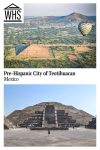Pre-Hispanic City of Teotihuacan
By Soumya Gayatri
What is the Pre-Hispanic City of Teotihuacan?
The Pre-Hispanic City of Teotihuacan is an ancient Mesoamerican city located in the Valley of Mexico, about 30 miles to the northeast of Mexico City. It is famous for its grandiose monuments including the Pyramid of the Sun (one of the tallest pyramids in the world), the Pyramid of the Moon, and the Temple of Quetzalcoatl (Pyramid of the Feathered Serpent).
Disclosure: This article contains affiliate links. Making a purchase through an affiliate link will mean a small commission for this website. This will not affect your price. Privacy policy.
Teotihuacan was built in the 1st-7th centuries CE by the people of the ancient Teotihuacan civilization. The city was later discovered in the 1300s by the Aztecs, who were awed by the size and the magnificence of the monuments. The Aztecs named it “Teotihuacan” or the “Place Where Gods Lived”.
Teotihuacan is open to the public. Visitors can see three majestic pyramids, the ruins of a citadel, residential buildings, and many mural-adorned walls.
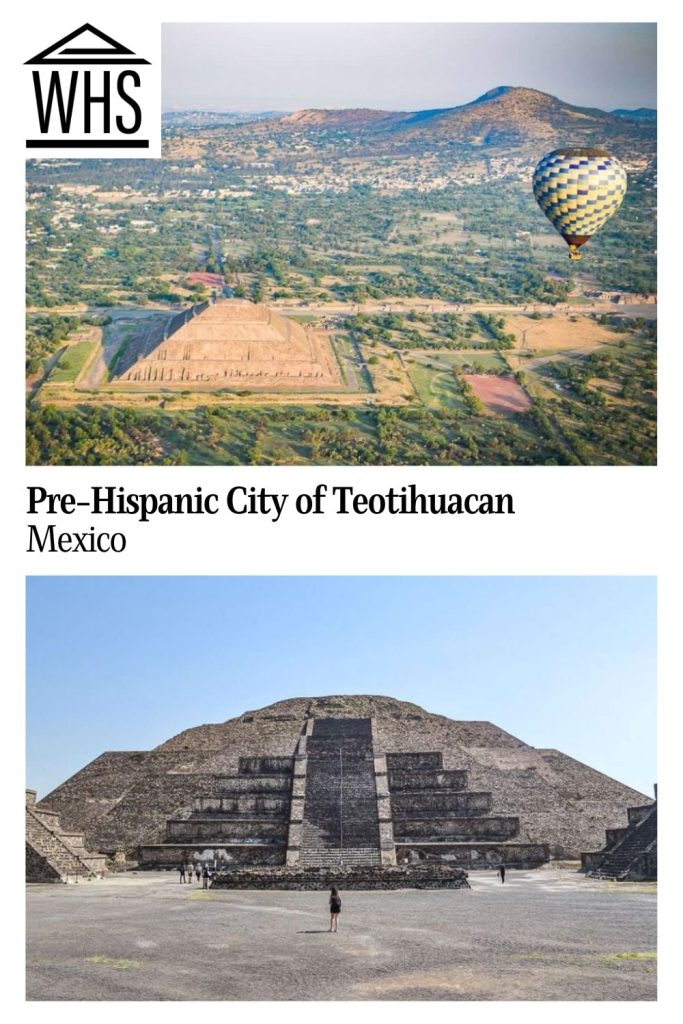
Why is the Pre-Hispanic City of Teotihuacan a UNESCO World Heritage site?
Teotihuacan was once the largest and most powerful city in ancient America. At its apogee, between 200 and 400 CE, Teotihuacan was home to over 200,000 people.
One of the most important characteristics that defines Teotihuacan is perfect urban planning. Teotihuacan’s monumental pyramids and other important buildings were constructed along the Avenue of the Dead, a north-south axis that connected the opposite ends of the city. This was in line with geometric and astronomical principles and represented an outstanding example of human creative genius.
UNESCO calls it “an outstanding example of a pre-Columbian ceremonial center.” As such, it influenced other pre-Columbian civilizations: “The city [of Teotihuacan] is considered a model of urbanization and large-scale planning, which greatly influenced the conceptions of contemporary and subsequent cultures”.
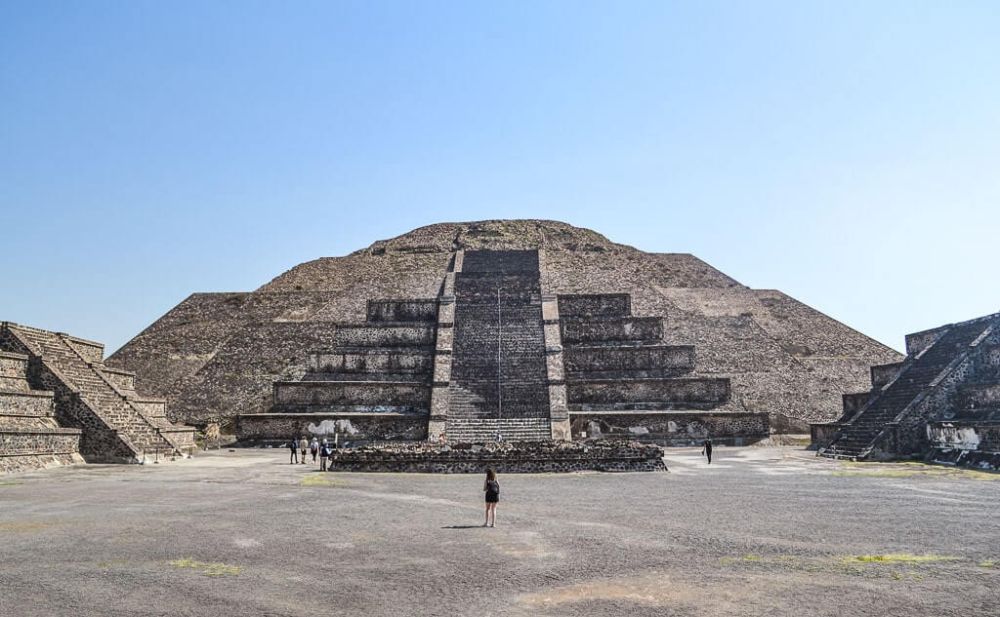
What can you expect on a visit to Teotihuacan?
There’s a lot to see in Teotihuacan. The Pyramid of the Moon flanks the northern end of the Avenue of the Dead whereas the Temple of Quetzalcoatl (Pyramid of the Feathered Serpent) flanks the southern end. In between, you’ll see the colossal Pyramid of the Sun and several smaller shrines. There’s a small museum on site that gives you deep insights into the lost Teotihuacan civilization.
Colorful murals adorn the walls of the Palace of Itzapapalotl and the Tepantitla Complex. The mural of a jaguar in a small niche on the Avenue of the Dead is the most famous Teotihuacan mural. The site also has a unique, often-missed mural museum called the Beatriz de la Fuente Mural Museum.
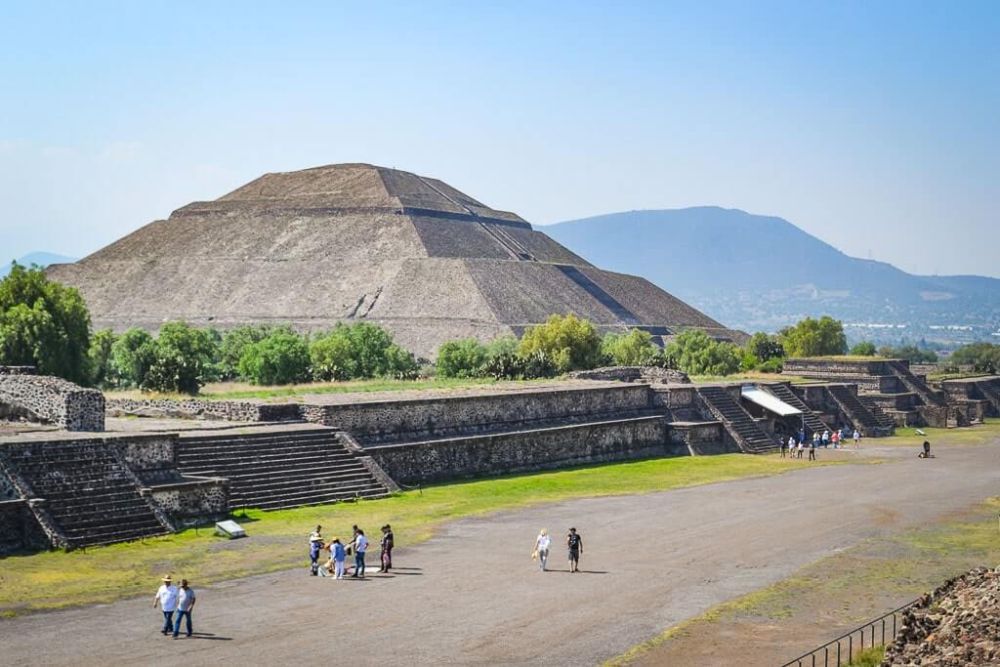
Is Teotihuacan worth visiting?
Yes, the Pre-Hispanic City of Teotihuacan is absolutely worth visiting because it provides an insightful journey into the life and culture of the people of Teotihuacan, the once-powerful civilization of Mesoamerica that vanished without a trace.
Teotihuacan’s massive pyramids, which were once temples dedicated to indigenous gods, provide a unique picture of Mexico’s pre-colonial history and architecture. Teotihuacan’s beautiful murals further tell us a lot about the art, culture, and religion of the people who lived in the Valley of Mexico thousands of years ago.
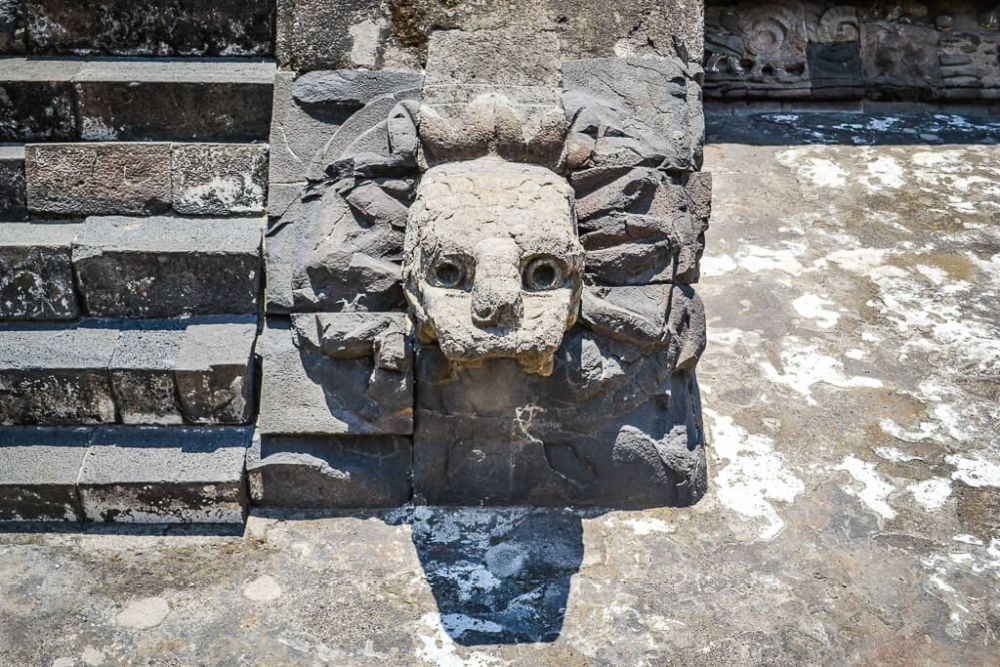
What sorts of travelers would like the Pre-Hispanic City of Teotihuacan?
History and architecture enthusiasts as well as art lovers will love exploring the Pre-Hispanic City of Teotihuacan. The hot air balloon flight over the Teotihuacan pyramids is sure to excite adventure lovers and thrill seekers.
Tips for visiting Teotihuacan
Get to Teotihuacan early to avoid the crowds. The archeological site is open from 8:00 am – 5:00 pm, Monday through Sunday.
Sunday and Monday are busy days in Teotihuacan. On Sundays, Mexican nationals and residents are allowed to enter for free. On Mondays, almost everything is closed in Mexico City. So everyone flocks to Teotihuacan. You’ll want to avoid these two days of the week if you don’t like huge crowds.
Teotihuacan Archeological Site is huge and has five entrance gates. Plan to enter through Gate 1 at the southern end of the site (by the Pyramid of the Feathered Serpent) and walk north on the Avenue of the Dead (about 1.5 miles) until you get to the Pyramid of the Moon. This way, you’ll be able to see the entire site.
You can buy your tickets to the archeological zone at the ticket counters on-site.
Ride the hot air balloon over Teotihuacan to get the best views of the pyramids. They look stunning in the golden rays of the rising sun. It also allows you to view the ancient city from a whole new perspective.
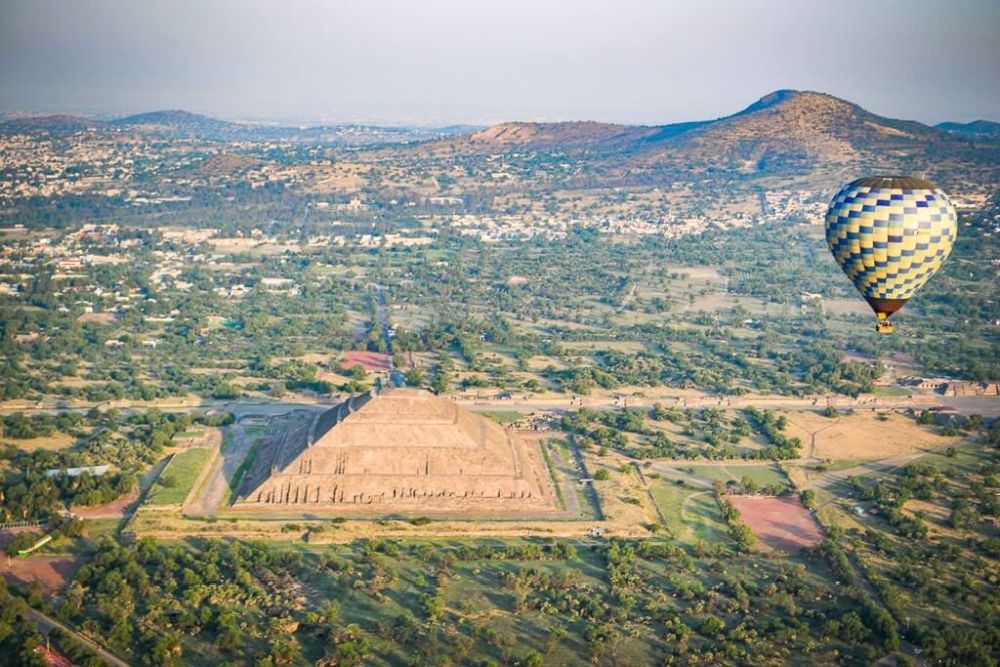
You can best explore Teotihuacan with an archeologist tour guide who can tell you exactly what the pyramids and monuments represent and their histories and evolution.
There are plenty of other ways to see Teotihuacan.
Don’t miss other nearby UNESCO sites such as Historic Centre of Mexico City and Xochimilco and Historic Centre of Puebla.
Where is Teotihuacan?
Teotihuacan is located in the basin of the Valley of Mexico, about 30 miles (50 km) northeast of Mexico City.
By car: Teotihuacan is an hour’s drive from Mexico City. Paid parking is available at the site.
By public transportation: Take Metro Line 5 to get to Autobuses del Norte Metro Station. Walk to Terminal del Norte Bus Station located right outside the metro station. From there, take a “Piramides” bus to Teotihuacan. Buses run every 15 minutes, from 6:00 am – 9:00 pm. A company called Autobuses Teotihuacan operates them and you can buy your bus tickets at the station.
For more information about the Pre-Hispanic City of Teotihuacan, its opening hours and admission fees, see its official website.
Have you been to Teotihuacan? If so, do you have any additional information or advice about this UNESCO World Heritage site? Please add your comments below!

